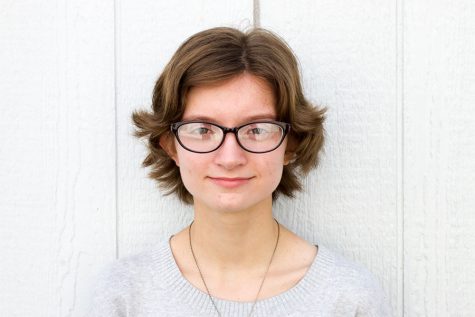Maya Angelou once said that “it is time for parents to teach young people early on that in diversity there is beauty and there is strength.”
This sentiment by one of the most renowned and talented poets of our time is echoed by many across the country. However, many people are also concerned that children of all colors, genders, and sexualities are not being reflected in the books they read.
The world of children’s and young adult literature is in some senses wide and varied, featuring everything from murderous ghosts in London to Winnie the Pooh. However, there is a troubling side to this: Statistics show that an overwhelming number of books for children and teens feature white and heterosexual characters. Though some may think that this is not a big issue, many will argue that it has far-reaching consequences.
This lack of diversity is supported by various data, and charts from a recent Publishers Weekly panel on the subject show that the situation isn’t changing. This data was supplied by Jason Low, a publisher of Lee & Low. An article on the Publishers Weekly website reads:
“The needle is not moving,” Low said, noting that about 36% of the U.S. population identifies itself as a person of color, while his data showed that about 10% of U.S. children’s books have content targeting minority readers. Low said his house, L&L, is an exception to the rule; it has 15 employees, nine of which are people of color. “We walk the walk,” he added.
Lee & Low is joined by a number of other organizations in the book world, including We Need Diverse Books.
We Need Diverse Books leapt into existence at the start of the summer, as an Internet campaign designed to raise awareness of the lack of diversity in children’s literature and why the issue needs to be addressed. Thousands of people posted pictures of themselves on social media, holding signs detailing why they believe more diversity is needed. The results touched on a range of topics:
- We need diverse books because the real world isn’t just a bunch of rich white guys walking
around - We need diverse books because mental illness is REAL
- We need diverse books because we live in a diverse world
One picture shows a young boy holding a sign saying, “We need diverse books because I want to grow up knowing I can be a hero too.”
Over the past several months, WNDB has grown into a full-blown grassroots organization, with a dedicated team. The president is young adult writer Ellen Oh, author of the Prophecy series, and she is joined by a team of authors, librarians, and, of course, readers. All are united by the organization’s mission statement, part of which reads, “We Need Diverse Books is committed to the ideal that embracing diversity will lead to acceptance, empathy, and ultimately equality.”
Eleanor Roosevelt High School’s own media specialist and school librarian, Ms. Susan Peterson, also said she is passionate about diversity in kids and teen literature. Why does she believe it’s important? “Because every student has to connect with a particular author. . .a particular perspective.” She commented on how librarians take an oath of intellectual freedom, saying “That includes diverse characters.”
Ms. Peterson tries to feature books with both male and female characters in the school library, as well as books that are bilingual, saying, “It’s a big focus for me.”
Ms. Peterson also recommends several titles in particular, including Call Me María by Judith Ortiz Cofer, The Brief Wondrous Life of Oscar Wao by Junot Díaz, and The Rose that Grew from Concrete by Tupac Shakur.
Some students of ERHS also recognize the lack of diversity. “I have noticed,” said sophomore Alia Parker. When asked about what some of the consequences of this might be, she said, “It can decrease. . .relatability,” adding, “Certain groups won’t read certain genres.”
Sophomore Muhammad Dawood said that he noticed a lack of diversity, but in the qualities possessed by book characters. “They’re mostly heroic or brave,” he said. “It could make people feel they have to be a certain way to be successful.”
We Need Diverse Books and many other people in the book community continue to dedicate themselves to encouraging literary diversity and its benefits. To learn more, you can visit http://weneeddiversebooks.org/, as well as http://weneeddiversebooks.tumblr.com/ and http://diversityinya.tumblr.com/.
After all, there isn’t only beauty in diversity—there is also strength.
————————-
To explore further, read these original and well-written books that also feature diverse
characters:
Two Boys Kissing by David Levithan
Monster by Walter Dean Myers
After Tupac and D Foster by Jacqueline Woodson
Climbing the Stairs by Padma Venkatraman
March: Book One by Congressman John Lewis, Andrew Aydin, and Nate Powell
Lies We Tell Ourselves by Robin Talley
We Were Here by Matt de la Peña
The Absolutely True Diary of a Part-Time Indian by Sherman Alexie
Legend by Marie Lu
Flygirl by Sherri L. Smith
Hereville: How Mirka Got Her Sword by Barry Deutsch
The Year of the Dog by Grace Lin



Mark Binder • Nov 21, 2014 at 12:00 pm
Thanks so much for covering this. I’ve been working on a book project for two years that dovetails with what you mentioned.
My book, Cinderella Spinderella began as a spoken word story that I was telling to diverse audiences in Boston. When it came time to produce the book/ebook, we chose to use five different “seasons” of Cinderella and the Prince. When the ebook came out, someone asked why the story didn’t change for each Cinderella. My goal as an author and storyteller is to connect people with stories. What’s great about this project has always been that any family can find themselves in the story.